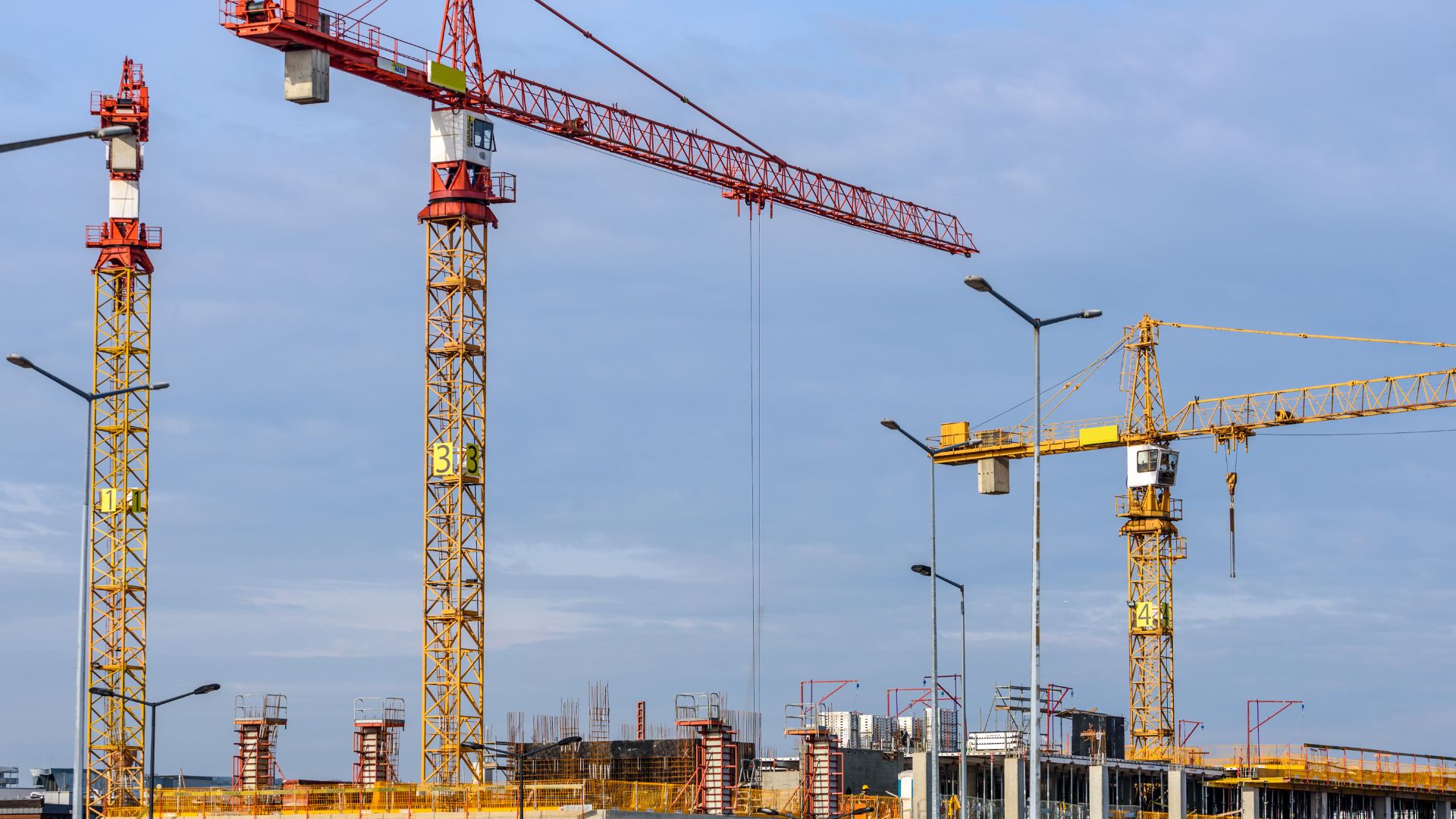Business
Mega Construction Projects That Relied on Advanced Crane Technology

When it comes to large-scale construction projects, the right equipment can make all the difference. From towering skyscrapers to massive bridges and complex infrastructure developments, cranes play a crucial role in lifting, transporting, and positioning heavy materials with precision and efficiency. As technology has advanced, so too has crane engineering, allowing for safer and more ambitious builds. In the points below, we take a closer look at some of the world’s most impressive mega construction projects that relied on cutting-edge crane technology to bring them to life.
Burj Khalifa – Dubai, UAE
Standing at a staggering 828 metres, the Burj Khalifa remains the tallest building in the world. Constructing such a colossal structure required cranes that could operate at extreme heights. Specialised luffing-jib tower cranes were employed to lift materials hundreds of metres into the air, battling high winds and desert heat. These cranes were anchored to the structure itself as it rose, ensuring stability and precision throughout the build.
Sydney Metro – Australia
As Australia’s largest public transport infrastructure project, the Sydney Metro has transformed the way people move around the city. The project required massive tunnel boring machines (TBMs) to carve underground routes, but just as critical were the cranes used to transport and position enormous precast concrete segments. Mobile and crawler cranes with advanced hydraulic systems played a key role in assembling stations and track infrastructure with minimal disruption to existing road networks.
Hong Kong-Zhuhai-Macau Bridge – China
This engineering marvel, stretching 55 kilometres across the Pearl River Delta, is one of the longest sea crossings ever built. Given its scale, floating cranes with immense lifting capacity were used to position pre-fabricated bridge sections. Some of these cranes had lifting capabilities exceeding 3000 tonnes, demonstrating the sheer power and precision required for such a complex marine project.
The Panama Canal Expansion – Panama
The expansion of the Panama Canal was one of the most ambitious infrastructure projects in recent history, involving the construction of massive new lock chambers. Gigantic gantry cranes were used to install the enormous steel lock gates, some weighing over 3000 tonnes. These cranes had to operate with pinpoint accuracy to ensure the seamless functioning of the canal’s new locks, allowing for the passage of larger vessels.
Hinkley Point C Nuclear Power Station – UK
The construction of this next-generation nuclear power plant has required some of the world’s most advanced heavy-lift cranes. The site features one of the largest land-based cranes in the world, capable of lifting reactor components that weigh hundreds of tonnes. These high-tech cranes have been crucial in ensuring the safe and efficient assembly of the plant’s intricate infrastructure.
The Role of Advanced Crane Technology in Modern Construction
Each of these projects would have been impossible without the evolution of crane technology. Innovations such as digital load monitoring, autonomous operation, and enhanced safety systems have allowed cranes to handle heavier loads with greater precision than ever before. For companies tackling complex construction projects, working with an experienced crane hire provider is essential. Businesses like Sventek Cranes offer cutting-edge crane solutions, ensuring that even the most ambitious projects can be completed safely and efficiently.
Mega construction projects continue to push the limits of engineering and design, and advanced crane technology remains at the heart of these achievements
Whether it’s lifting components for a record-breaking skyscraper or positioning bridge segments over open water, cranes will always be an integral part of building the world’s most remarkable structures. By leveraging state-of-the-art crane systems, today’s construction industry is making the impossible possible – one lift at a time.
Business
Ethical Affiliate marketing : Defining the Conflict

Affiliate marketing in the online casino industry walks a fine line between commercial interest and editorial integrity. Affiliates earn commissions when players register or deposit through affiliate links, yet these same affiliates often publish reviews claiming to guide users toward the best and safest operators. This dual role creates a potential conflict of interest: can a reviewer remain truly objective while being financially rewarded for player conversions?
This ethical tension is not hypothetical, it defines the entire casino review system. Readers expect independent recommendations, while advertisers aim for visibility and sign-ups. The challenge, therefore, lies in ensuring that commercial necessity never compromises editorial honesty. Without clear ethical structures, the trust between affiliate and reader quickly collapses, breaking the foundation of any long-lasting brand in the iGaming space.
The Ethical Solution: Editorial Firewalls
Responsible affiliates have developed a structural response to this dilemma known as the “editorial firewall.” This principle strictly separates commercial operations (such as partner negotiations and commission management) from editorial teams responsible for content, ratings, and recommendations. By preventing advertisers or commercial staff from influencing content, affiliates safeguard the objectivity of their reviews.
Antti Virtanen, Editor in Chief of Kasinohai, explains this responsibility clearly:
“My primary responsibility is to maintain the editorial firewall. If an advertiser’s payment can influence a casino’s star rating, we have failed our readers, and that short-term gain will instantly destroy the decade of trust we have built.”
The editorial firewall functions much like journalistic separation between newsroom and advertising department. Editors work with established criteria: licensing, game variety, payment methods, and player protection measures. Without any interference from commercial targets. When this discipline is followed, affiliates can confidently assure readers that ratings reflect evidence-based quality, not marketing budgets.
Maintaining such independence often comes with short-term sacrifices: rejecting lucrative offers from less trustworthy operators or declining to modify reviews to appease advertisers. Yet, for ethical affiliates, these sacrifices strengthen the brand’s reputation and guarantee the long-term viability of their business model.
Prioritizing Safety and Trust
True ethical affiliation starts with a single non-negotiable principle: only promote casinos that are safe, licensed, and compliant with responsible gambling regulations. Trust begins at selection. Every casino under review should pass a rigorous safety audit, covering valid gaming licenses, secure payment processing, transparent bonus terms, and the presence of responsible gambling tools such as deposit limits and self-exclusion options.
Antti Virtanen underlines this commitment:
“The ethical commitment begins at the gate: our first and most important filter is licensing and player safety. Any operator that fails our rigorous background checks on responsible gaming tools, fair terms, or payment security will never be promoted, regardless of their commercial offering.”
By excluding unsafe or unlicensed platforms, affiliates act as front-line gatekeepers, shielding players from potential fraud or exploitative practices. Ethical affiliates must also stay proactive, regularly updating their databases and removing any operators that lose licenses, alter fair terms, or develop unresolved consumer complaints. This proactive maintenance shows readers that the site’s focus is not only on visibility but on genuine player well-being.
Ethics in affiliate marketing also extend to how bonuses and offers are presented. Affiliates must reject misleading promotions that hide behind fine print or impose unrealistic wagering requirements. Fair representation of bonus terms not only protects players but also differentiates responsible affiliates from competitors who prioritize click volume over credibility.
Transparent Disclosure
Transparency is a cornerstone of ethical affiliate marketing. Readers deserve to understand how affiliate links work and how they affect the content they see. A clear, accessible disclosure explains that the affiliate may receive compensation when users register or deposit through referral links. However, this relationship should never impact the user’s cost, terms, or overall experience on the casino site.
The purpose of transparency is twofold: it builds trust with readers and aligns with regulatory expectations for advertising disclosures. A good disclosure statement is not hidden in small print; it’s presented as part of the site’s editorial ethic. It assures visitors that commercial partnerships never influence ratings, reviews, or recommendations.
In practice, this can appear as a brief statement at the start or end of a review, linking to a detailed explanation of the site’s business model. Clear communication empowers readers to make informed decisions and it alleviates the underlying skepticism that often surrounds online casino reviews.
Transparency also extends to responsible gambling communication. Affiliates should remind readers that gambling involves risk and provide visible links to national helplines, self-exclusion tools, and player protection resources. When ethical values are embedded not only in compliance checklists but also in editorial tone, the brand earns genuine user respect.
Long-Term Value
The ultimate goal of ethical affiliate marketing is sustainability building a relationship of long-term trust that outlasts the allure of short-term profits. A single misleading recommendation might boost conversions temporarily, but the resulting loss of credibility can permanently damage a brand.
Antti Virtanen captures this philosophy:
“In the end, ethical affiliate marketing is not a high-volume business; it’s a high-trust business. Our long-term success isn’t measured by the conversion rate of a click, but by the number of players who return to us because we saved them from a poor or unsafe experience.”
This perspective reframes success away from mere performance metrics toward qualitative measures: user satisfaction, returning readership, and brand reliability. Ethical affiliates understand that authority and trust cannot be purchased—they are earned through consistent transparency, careful editorial standards, and user-focused decision-making.
Long-term value also aligns with broader industry goals of promoting responsible gambling and sustainable player engagement. Affiliates that champion these principles contribute positively to the reputation of the iGaming industry as a whole.
Ethical affiliate marketing is not a static policy it is an ongoing commitment to transparency, responsibility, and respect for the audience’s trust. Establishing strict editorial firewalls, prioritizing player safety, and maintaining open disclosure practices form the blueprint for sustainable success. In an environment driven by competition and revenue potential, ethics are not a hindrance but the very strategy that distinguishes credible affiliates from the rest.
-

 Tech5 years ago
Tech5 years agoEffuel Reviews (2021) – Effuel ECO OBD2 Saves Fuel, and Reduce Gas Cost? Effuel Customer Reviews
-

 Tech6 years ago
Tech6 years agoBosch Power Tools India Launches ‘Cordless Matlab Bosch’ Campaign to Demonstrate the Power of Cordless
-

 Lifestyle6 years ago
Lifestyle6 years agoCatholic Cases App brings Church’s Moral Teachings to Androids and iPhones
-

 Lifestyle5 years ago
Lifestyle5 years agoEast Side Hype x Billionaire Boys Club. Hottest New Streetwear Releases in Utah.
-

 Tech7 years ago
Tech7 years agoCloud Buyers & Investors to Profit in the Future
-

 Lifestyle5 years ago
Lifestyle5 years agoThe Midas of Cosmetic Dermatology: Dr. Simon Ourian
-

 Health7 years ago
Health7 years agoCBDistillery Review: Is it a scam?
-

 Entertainment6 years ago
Entertainment6 years agoAvengers Endgame now Available on 123Movies for Download & Streaming for Free
